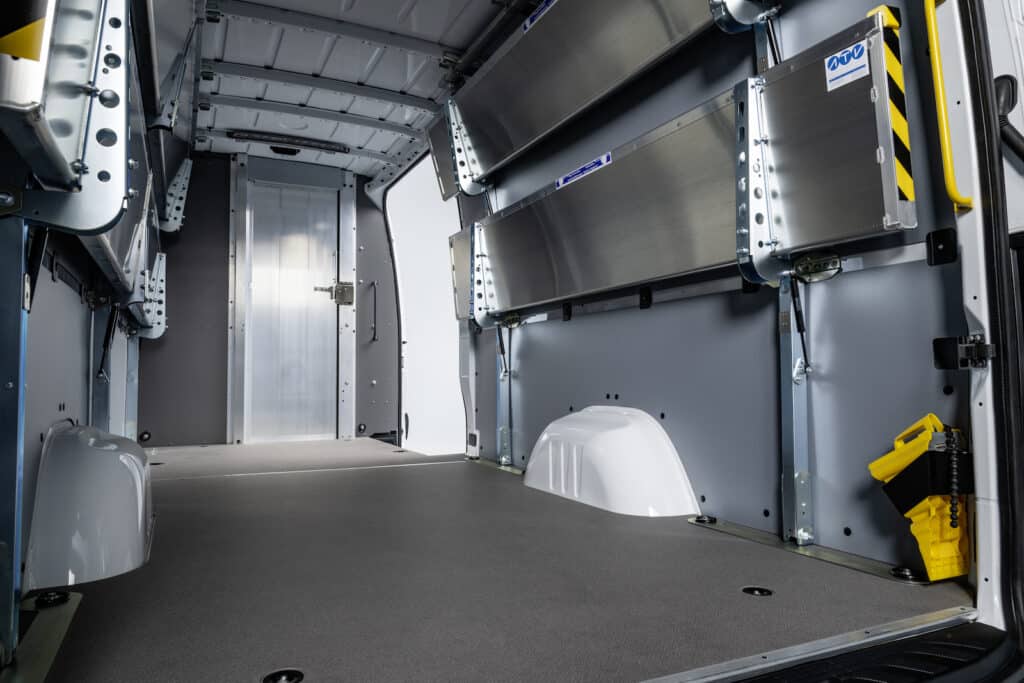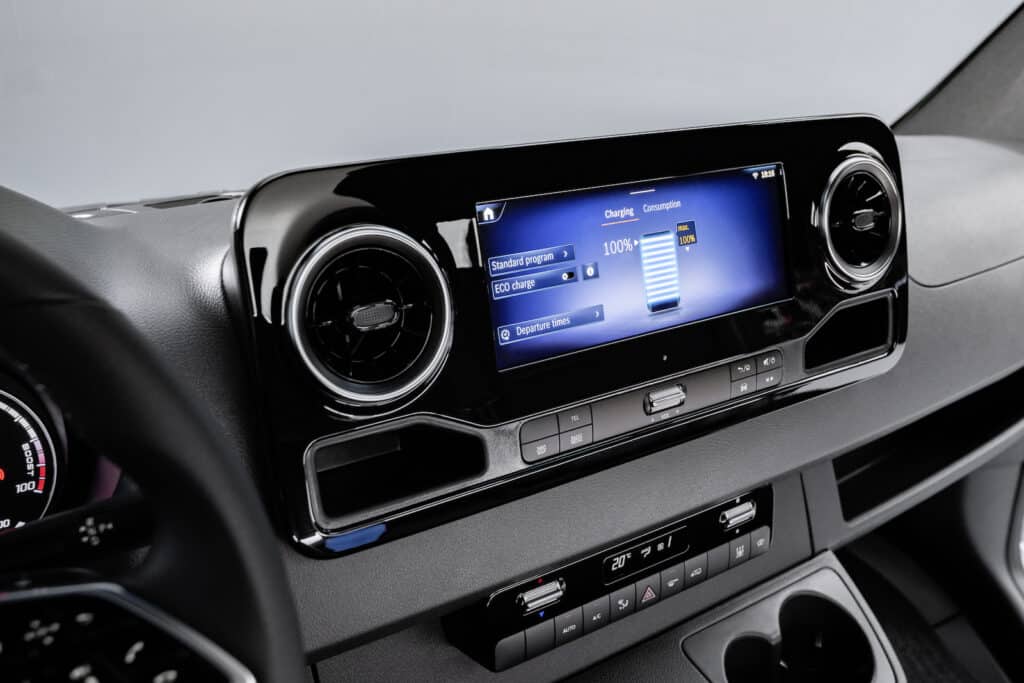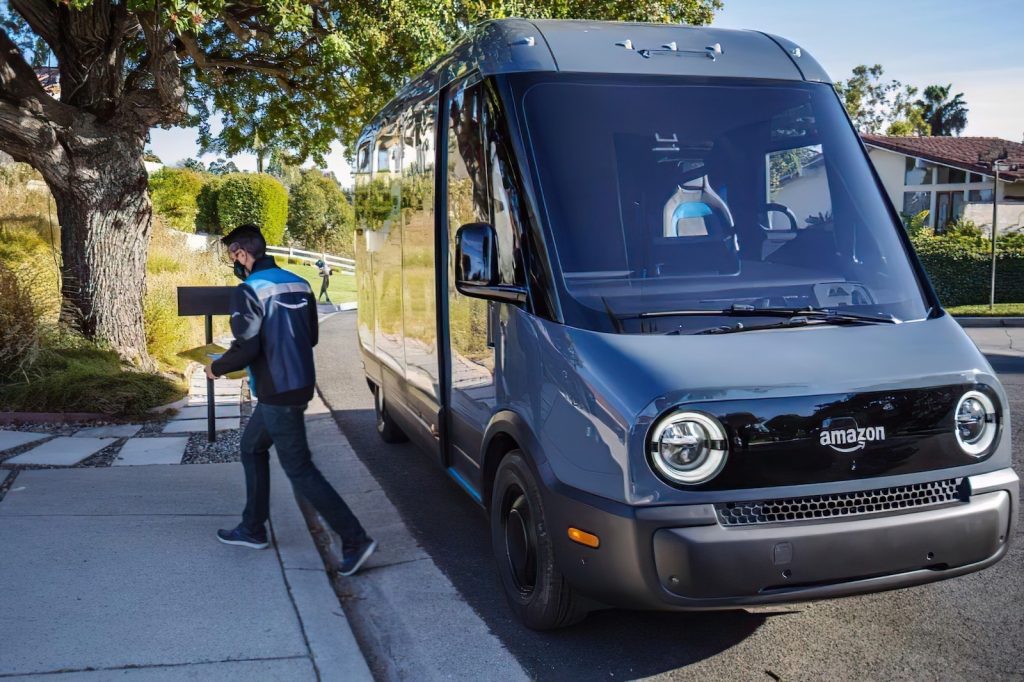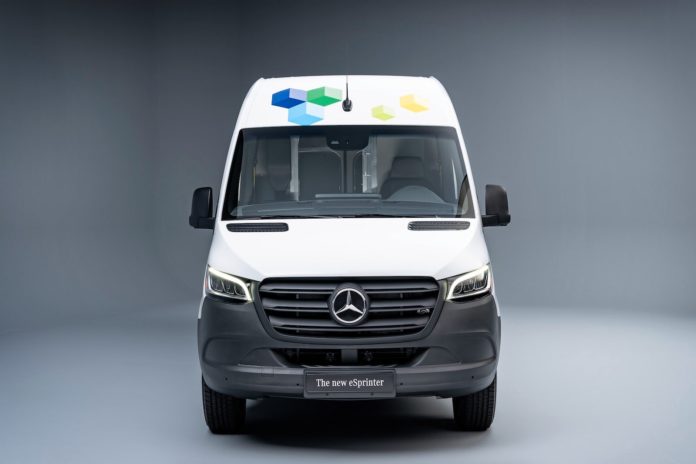Fleet owners will soon have a new choice among electric vans as Mercedes-Benz releases its all-new 2024 eSprinter launches in the U.S. and Canada in the second half of 2023, with Europe following later in 2023.
The new battery electric van will be built in Charleston, South Carolina, as well as in Ludwigsfelde and Düsseldorf Germany.
The new van joins the rapidly expanding electric van market, one that includes the Ford E-Transit, Rivian’s Electric Delivery Vans (or EDV) for Amazon and General Motors’ BrightDrop. Canoo is expected to join the market later this year with its Lifestyle Delivery Van, or LDV.
The first all-electric Mercedes-Benz Sprinter van debuted in Europe in 2019.
“With the new eSprinter, we are taking the electric large van segment to a new level. The triad of efficiency, range and load capacity with simultaneous TCO (total cost of operation) optimization makes the new eSprinter the most versatile Mercedes-Benz eVan ever,” said Mathias Geisen, head of Mercedes-Benz Vans.
The announcement comes after a planned European-market joint venture between Rivian and Mercedes-Benz to make electric vans was put on hold in December 2022, a mere three months after the collaboration was announced.
Better the second time

The 2024 eSprinter will be offered in the U.S. solely as a long cargo van with a high roof, and powered by the eSprinter’s largest battery pack with 113 kWh of capacity. That’s enough for an overall range of 248 miles on the European WLTP test cycle, and as much as 311 miles in city driving, according to Mercedes-Benz. U.S.-specific figures are expected be released closer to launch.
The eSprinter’s permanent magnet synchronous motor will be available with 100 kW (143 horsepower) or 150 kW (201 horsepower) of output, and as much as 295 pound-feet of torque.
The eSpinter can carry 488 cubic feet of cargo, with a max payload of 2,624 pounds and a gross vehicle weight rating of 4.25 tons.
The new model is a huge improvement over the prior model, which was powered by a meager 47-kWh battery that generated a mere 116 horsepower, although Mercedes-Benz will offer smaller 56-kWh and 81-kWh battery packs outside of America.
Talking tech

When it comes time to replenish the 113-kWh lithium/iron phosphate battery from 10 to 80 percent, expect it to require about 42 minutes using a fast charger, according to Mercedes-Benz.
And thoughtfully, Mercedes-Benz equips each eSprinter with Crosswinds Assist, which uses the brakes on the upwind side of the van when travelling more than 50 mph to help maintain a straight track on windy days.
As you would expect, the most recent version of Mercedes-Benz User Experience software is installed on the eSprinter’s multimedia screen, and it features navigation that determines the optimal charging strategy to go to the destination as quickly as possible or to have the desired level of charge upon arrival.
Mercedes-Benz hasn’t announced pricing, which should become available closer to vehicle’s launch.
How it compares
The 2024 Mercedes-Benz eSprinter comes to market as others are already marketing battery electric vans.
Rivian’s EDV, currently in use by Amazon in more than 100 cities across the U.S., is offered in two lengths, with 500 or 700 cubic feet of space. Its 135-kwh battery pack provides up to 150 miles of range.

“We’ve already delivered over 5 million packages with our vehicles produced by Rivian, and this is still just the beginning — that figure will grow exponentially as we continue to make progress toward our 100,000-vehicle goal,” said Udit Madan, vice president of Amazon Transportation.
Ford Motor Co. is also in the market with E-Transit cargo van. Its 68-kWh lithium ion battery pack provides 126 miles of range on low-roof models. The E-Transit’s electric motor puts out 266 hp and 317 lb-ft of torque. It’s expected to have a maximum payload of up to 4,290 pounds, depending on the version.
Not to be left out is General Motors. Its BrightDrop division is building the Zero EV with 250 miles of range, all-wheel drive, and 300 hp and 390 lb-ft of torque. It can hold more than 600 cu ft of cargo.
Later this year, Canoo is expected to offer its LDV. With 121 cu ft of space and a payload of 1,543 pounds, the rear-wheel-drive van has an 800kWh battery that provides as much as 350 hp and a range of up to 200 miles. Charging from 20%-80% takes 28 minutes using a DC fast charger.
Certain the 2024 Mercedes-Benz eSprinter is competitive, and executives are confident of its success.
“The new Mercedes-Benz eSprinter consistently follows our strategy — to be the leader in electric mobility with the most desirable vans while achieving profitable growth worldwide,” Geisen said.

